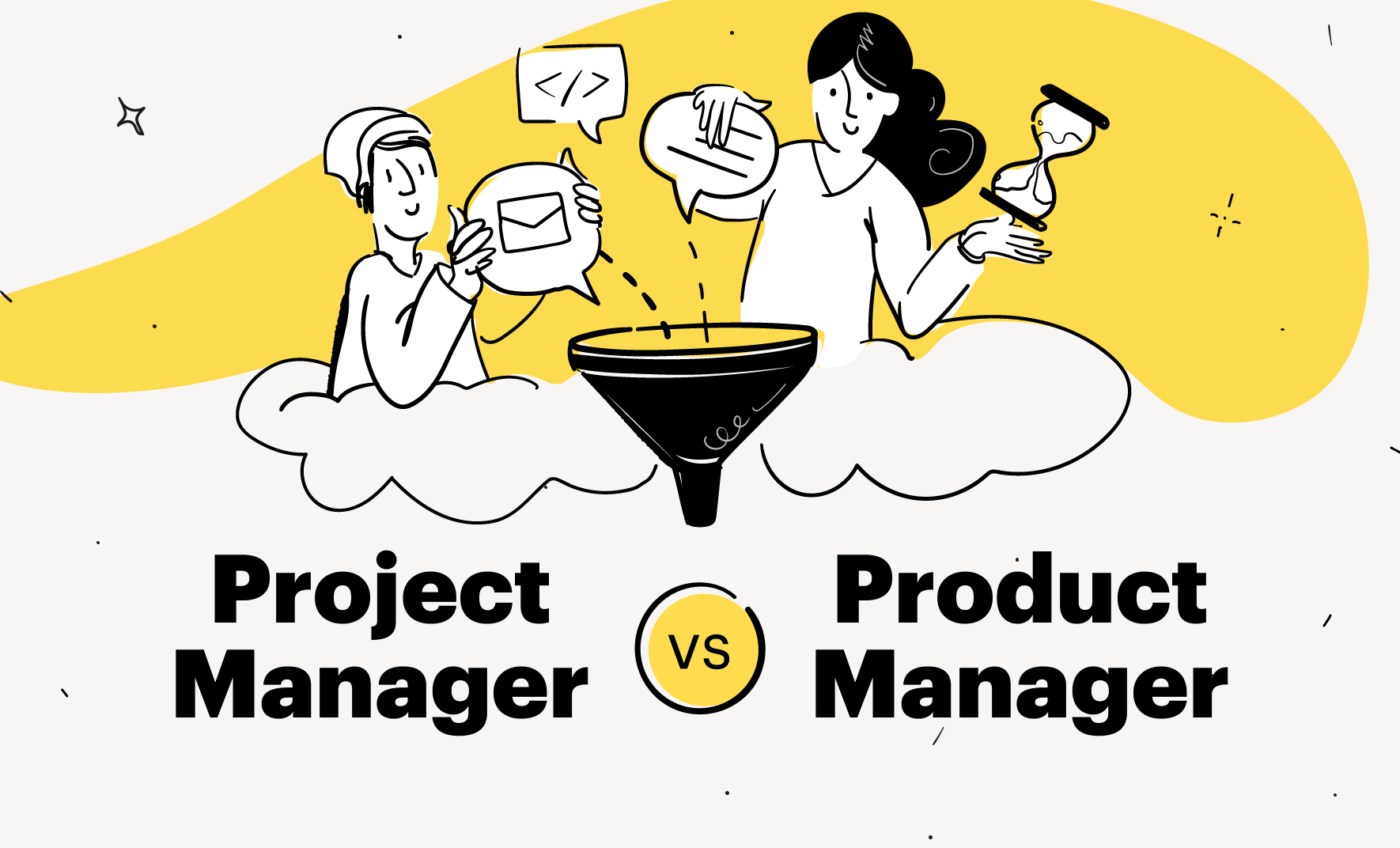Project Manager vs Product Manager In a Nutshell

Project Manager vs Product Manager – they might sound nearly the same, but what’s really the difference?
The roles of a project manager and product manager might overlap in terms of certain skills, but if you are here, you want to find out what the differences are.
Yes, these two can be confusing, but after reading this article you will get a clear idea of the similarities and differences between them.
Ready for a quick overview? Read on!
First, we are going to look at the specifics of each role, or let’s just say the differences between Product Manager vs Project Manager.
1. What is the role of the Product Manager?
Here is a quick description of what a Product Manager usually does:
Product Manager responsibilities
- Sets the vision for a product and overall direction
- Understanding user needs and market
- Talking to users and gathering requirements
- Identifying problems and opportunities
- Creating a roadmap and defining features
- Prioritizing tasks in the development
- Moving product from alpha to beta tests
- Delaying release because of bugs, etc.
- Remove a product from the market or part of it
- Responsible for the profit and loss function of a product
- Collaborate with sales, marketing, and support teams to make sure the business needs are met
And now let’s have a look at the role of a Project Manager.
Some of the Project Manager’s responsibilities include:
- Acting upon a vision and making sure it’s executed on time and within budget
- More tactical roles, focusing on execution
- Developing a project timeline
- Planning the work of the team to meet the deadlines
- Successfully bringing a project to its completion
- Monitoring budget, timeline, and quality to make sure they are up to the agreed standard
- Responsible for risk management – minimizing potential risks that might affect the project
- Managing tasks – setting dates, assigning to team members, implementing project methodology, and using tools to complete the tasks
- Resource handling – making sure the materials, and infrastructure are provided and the team has everything they need to work
- Balancing between time, budget, and resources, so that they meet as much as possible the initial project scope.
Another major difference is that a project is temporary. It has a clear definition of activities and a time frame.
On the other hand, a product creates a continuous value for users and doesn’t always have a set time frame.
Simply put, one is time-bound with concrete goals to be achieved, whereas the other is more spread in time and has continuous development.
To summarize, product managers deal with the “What” and “Why” questions and the technical issues of a product, whereas project managers deal with the “Who”, “How” and “When” and the functional part of the product/project. The first is oriented externally – to the users and market and the latest – is internally (how everything will operate within the team and the project).
We’ve covered more or less the significant difference between the two roles and now, what’s left is to look at some similarities.
2. Product Manager vs Project Manager – The similarities
Quite often the terms product manager and project manager are used interchangeably, and that’s not entirely wrong, since in smaller companies their functions overlap. We are not saying it’s easy to handle all the responsibilities of both roles at the same time, but still, it’s doable.
Both Project Manager and Product Manager must be good leaders and communicators – no matter if working with clients and customers or with a trusted team.
Both must have the solid industry knowledge to make sound project decisions.
A Product Manager and a Project Manager would have to report regularly to stakeholders and be flexible in order to meet as much as possible everyone’s expectations.
We mentioned that juggling both roles it’s not easy and here are some of them
3. Challenges of the overlapping roles
As you can imagine, a product manager’s job does not require that much technical knowledge. Being visionary and responsible for tracking schedules is not always an easy task.
Probably the biggest challenge would be the decreased focus – one of the roles (Product Manager) is naturally more focused externally.
All the activities happening outside the workspace occupy the attention of a Product Manager a lot, and there is less time to keep an eye on the internal processes.
Not in the last place, have you heard of bottlenecks?
That’s the term we use when too many things rely on one single person. If the roles of a Project Manager and a Product Manager overlap, there will simply be too much responsibility on the shoulders of a single person.
With that, we covered the basics around Product and Project Managers and we hopefully left you with some fresh, good, and concise knowledge on the topic of project and management.
If you liked this article, we have the whole series dedicated to this topic, and here is what to read next – How to win first-time clients with a great first response.